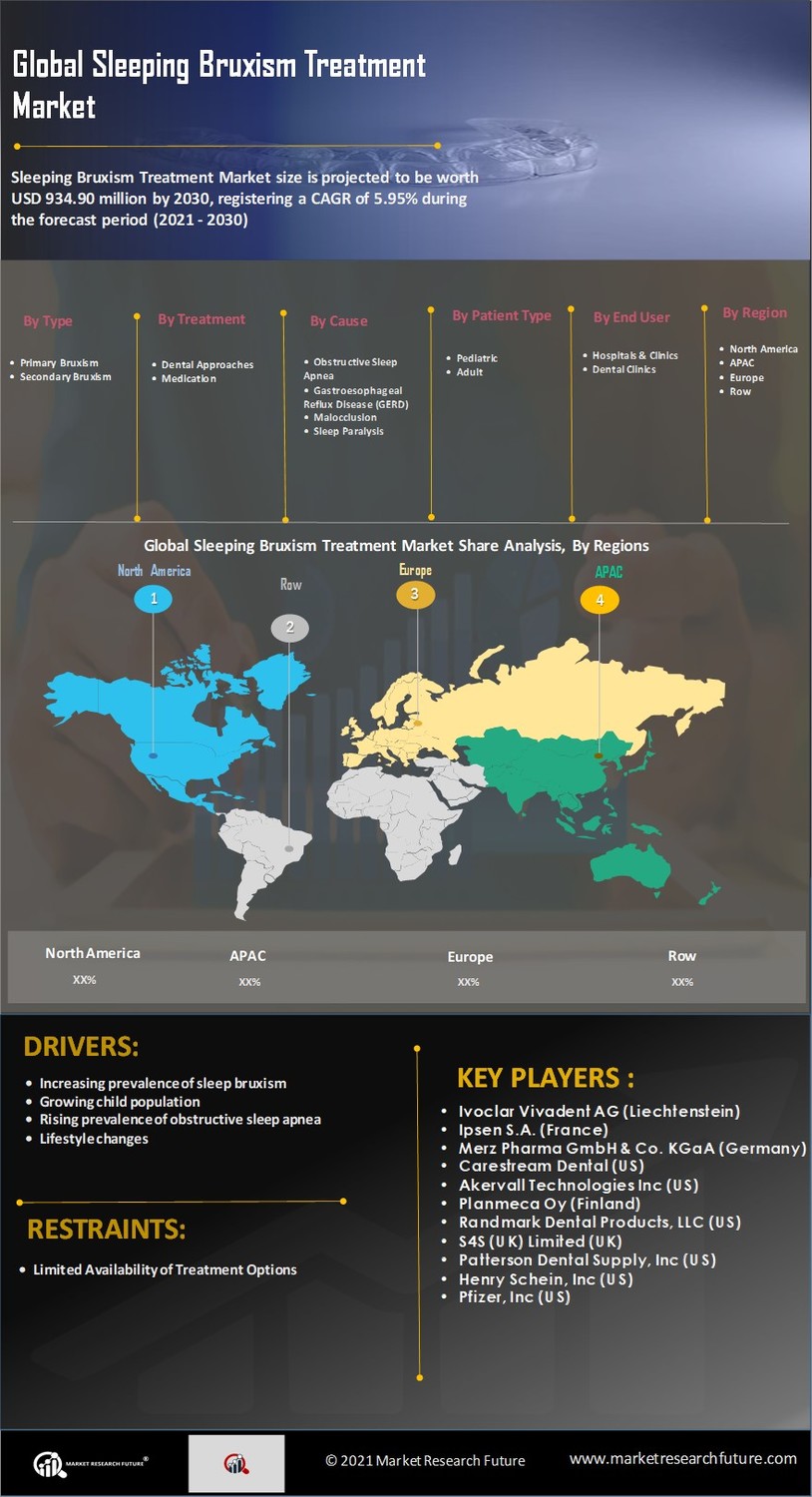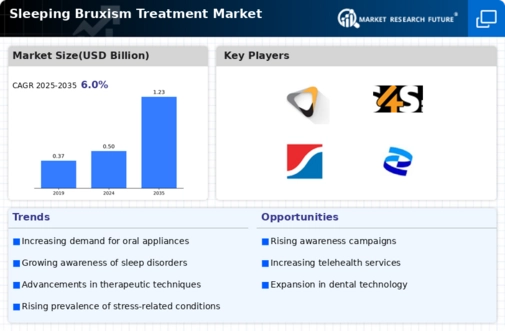Market Growth Projections
The Global Sleeping Bruxism Treatment Market Industry is projected to experience substantial growth over the coming years. With an estimated market value of 0.5 USD Billion in 2024, the industry is expected to expand significantly, reaching 1.23 USD Billion by 2035. This growth is underpinned by a compound annual growth rate of 8.54% from 2025 to 2035. Factors contributing to this expansion include increasing awareness of bruxism, advancements in treatment technologies, and rising dental care expenditures. The market's trajectory suggests that it will continue to evolve, driven by both consumer demand and innovations in treatment methodologies.
Rising Dental Care Expenditure
An increase in global dental care expenditure is a significant driver for the Global Sleeping Bruxism Treatment Market Industry. As individuals prioritize oral health and invest in preventive care, the demand for bruxism treatments is likely to rise. According to recent data, dental spending is projected to grow, reflecting a broader trend towards health-conscious consumer behavior. This increase in expenditure may lead to higher adoption rates of dental appliances and therapies for bruxism, contributing to the market's anticipated growth. The market is expected to reach 0.5 USD Billion in 2024, with further expansion anticipated as awareness and spending continue to rise.
Increasing Awareness of Bruxism
The rising awareness of bruxism as a prevalent dental disorder is a key driver for the Global Sleeping Bruxism Treatment Market Industry. As more individuals recognize the symptoms and potential consequences of untreated bruxism, the demand for effective treatments is likely to increase. Educational campaigns by dental associations and healthcare providers have contributed to this awareness, leading to a projected market value of 0.5 USD Billion in 2024. This heightened awareness may encourage patients to seek professional help, thereby expanding the market for various treatment options, including dental guards and behavioral therapies.
Integration of Behavioral Therapies
The integration of behavioral therapies into treatment plans for bruxism is emerging as a crucial driver for the Global Sleeping Bruxism Treatment Market Industry. Techniques such as cognitive-behavioral therapy and stress management strategies are being recognized for their effectiveness in reducing bruxism symptoms. This holistic approach not only addresses the physical aspects of bruxism but also its psychological triggers, appealing to a broader patient demographic. As healthcare providers increasingly adopt these therapies, the market is likely to experience growth, with projections indicating a market value of 1.23 USD Billion by 2035, driven by the comprehensive management of bruxism.
Growing Incidence of Stress and Anxiety
The increasing prevalence of stress and anxiety disorders globally is contributing to the rise in bruxism cases, thereby impacting the Global Sleeping Bruxism Treatment Market Industry. Stress is a known trigger for bruxism, and as mental health awareness grows, more individuals are likely to seek treatment for associated symptoms. This correlation suggests that as stress levels rise, so too will the demand for bruxism treatments. Consequently, the market is poised for growth, with estimates indicating a potential market value of 1.23 USD Billion by 2035, driven by the need for effective management strategies for stress-related bruxism.
Technological Advancements in Treatment Options
Technological innovations in dental care are significantly influencing the Global Sleeping Bruxism Treatment Market Industry. The introduction of advanced dental appliances, such as custom-fitted night guards and biofeedback devices, enhances treatment efficacy and patient comfort. These innovations not only improve patient outcomes but also attract more individuals to seek treatment. As the market evolves, the integration of digital health solutions, such as mobile applications for monitoring bruxism, is expected to further drive growth. This trend aligns with the projected market expansion to 1.23 USD Billion by 2035, reflecting a compound annual growth rate of 8.54% from 2025 to 2035.

















Leave a Comment